As part of an effort to upgrade its campus entrances, the WashU Medical School conducted a major landscape transformation within the two large triangle areas associated with the new “Washington University Medical Campus” signage near the 64-40/Kingshighway interchange.
Since its completion in the fall of 2019, the project, which consisted of the replacement of turf with native plants, has already proven many benefits. Not only has the new landscape beautified sightlines for pedestrians and drivers in the area, it has also improved safety for both the users of the road and the workers who maintain the space. The removal of large plants has improved visibility at the intersection, while the more resilient landscape has reduced the need for grounds workers to cross this high traffic area.
The many benefits of going from turf to native plants
- Less turf means less mowing. Lawn mowers, especially commercial mowers, run almost exclusively on gasoline, which release carbon dioxide into the atmosphere every time they are used. By eliminating turf, we also eliminate the need to mow those areas – which nearly eliminates all the CO2 emissions from maintaining the space.
- Native plants require less irrigation. Turf and non-native plants, or plants that normally live in a different climate, tend to require irrigation to survive. When replaced with plants that are native from Missouri, irrigation is only needed during their first year of life to establish a strong root system. After which, they are already adapted to live in our climate and can survive through our hot dry summers and cold wet winters.
- Less mowing and maintenance improves worker safety. Our landscaping contractor crew mows turf areas on campus once a week. Crossing busy roads like Kingshighway to mow a small section of grass posed a safety risk every week for those workers. Now that the areas are native and adaptive plants, the only maintenance needs are occasional weeding and litter removal.
- Native plants are the basis for a healthy ecosystem. By growing native plants, we are also supporting beneficial insects, birds, and butterflies, by providing habitat and food sources.
- Native plantings are far more diverse, unique, and beautiful.
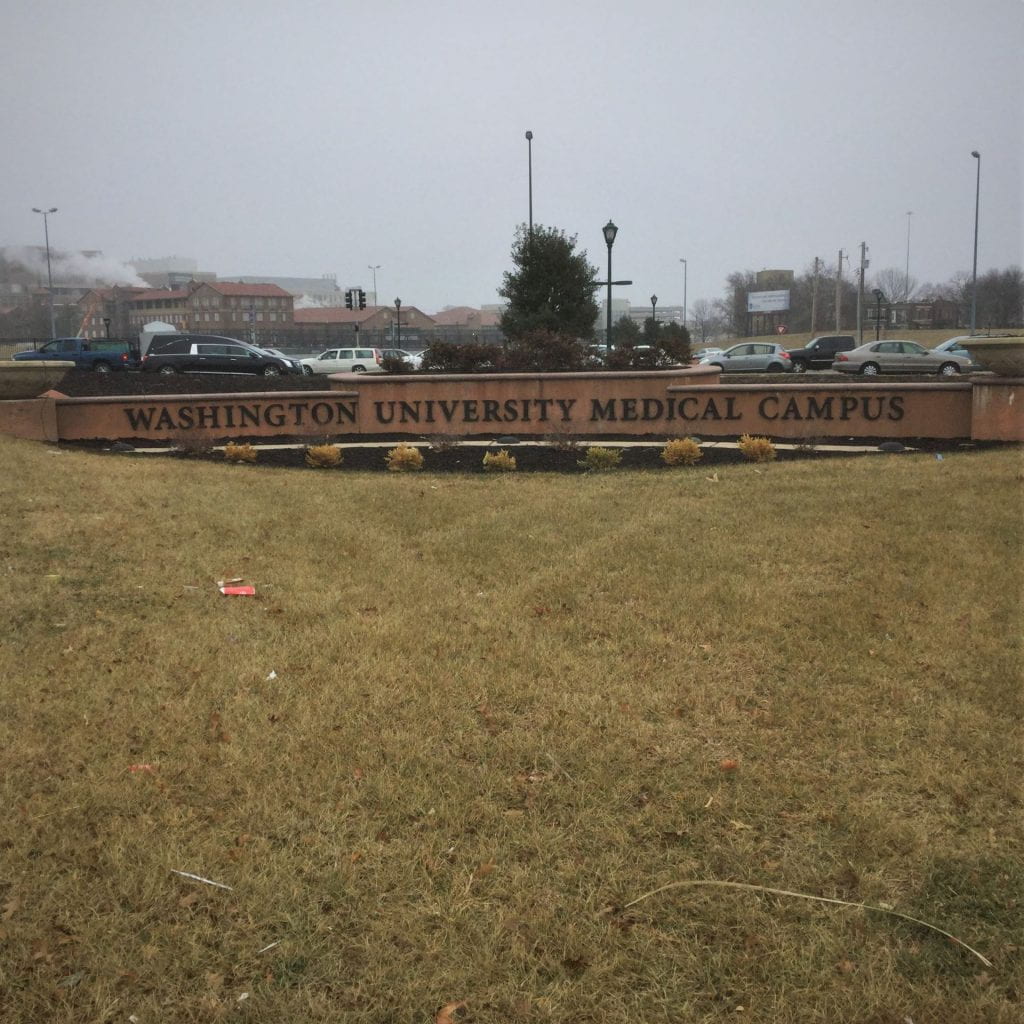
Landscape BEFORE 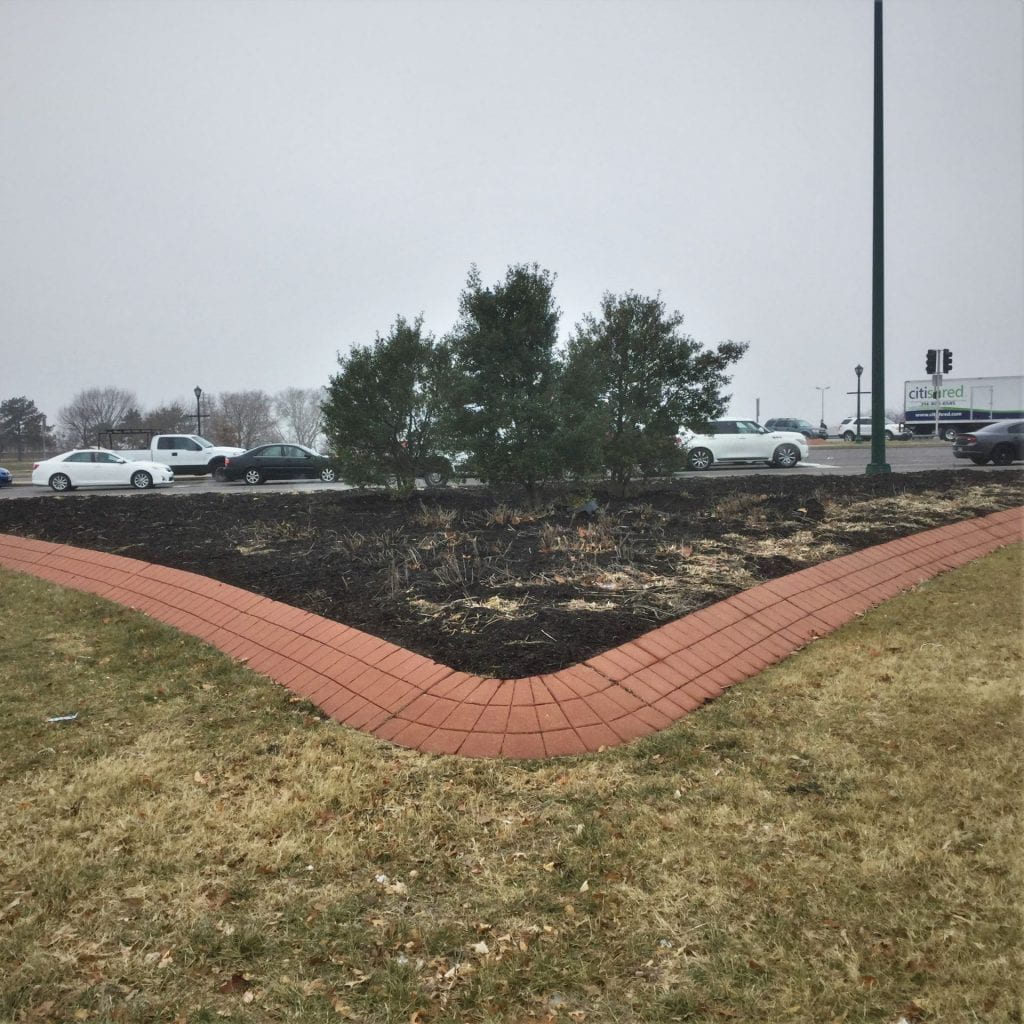
Landscape BEFORE 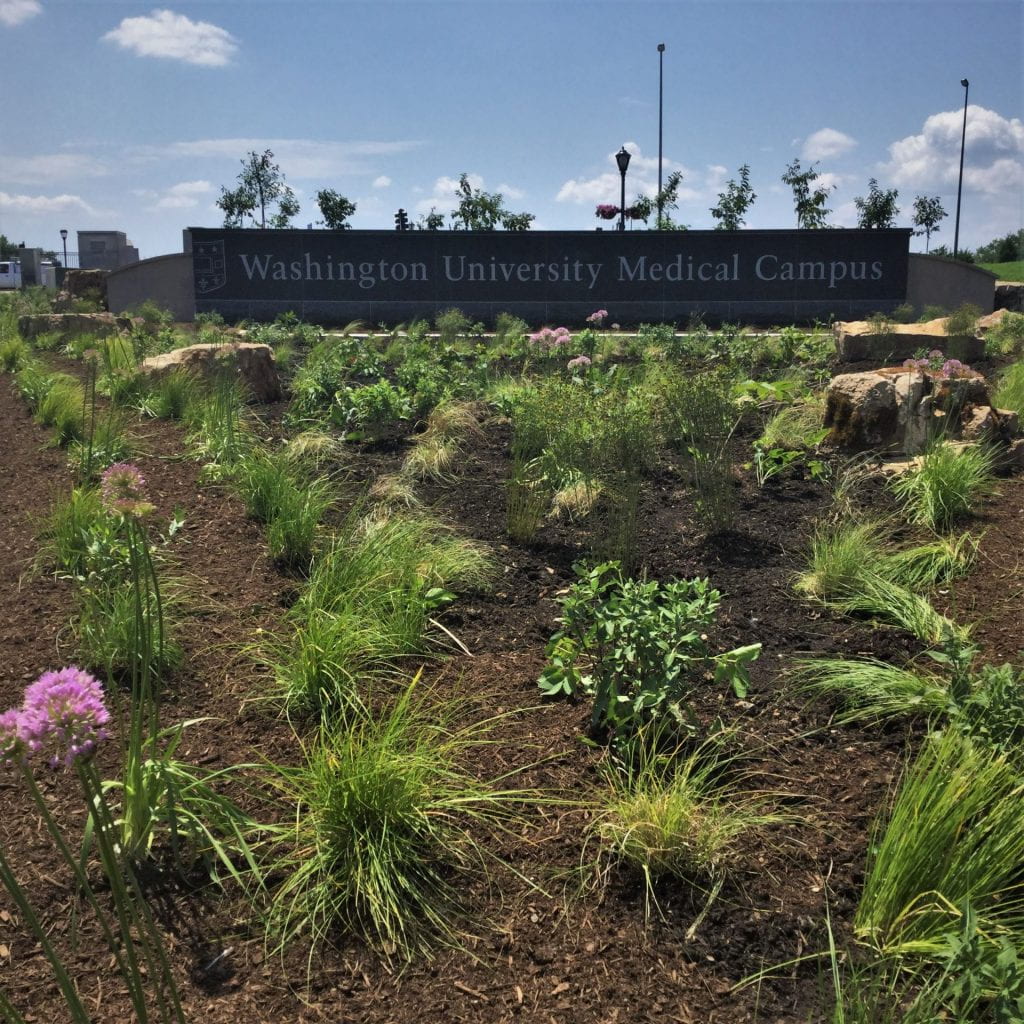
Landscape AFTER 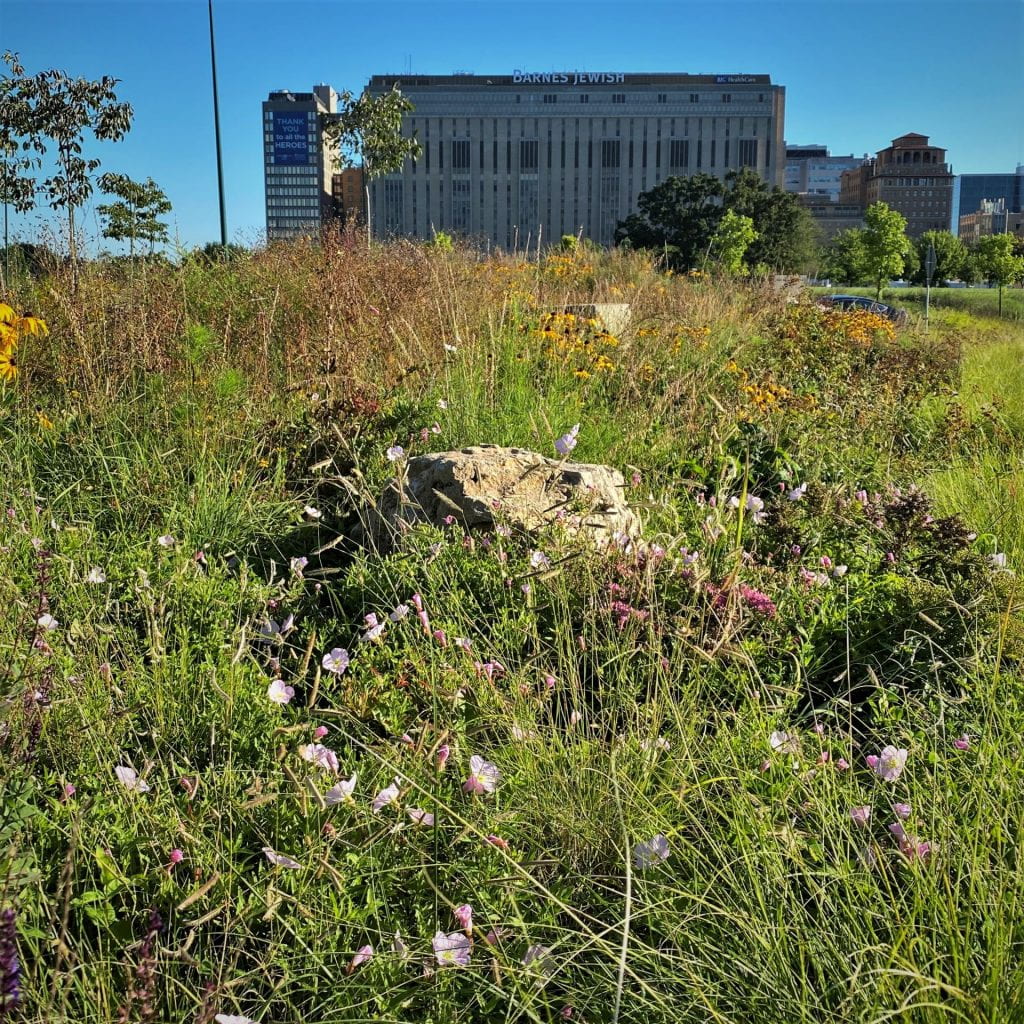
Landscape AFTER
The therapeutic value of a natural landscape
Allan Miller (Project Manager for Civil, Landscape, & Grounds at the School of Medicine) and Cody Azotea (Focal Pointe Account Manager) shared some wisdom about the power of natural landscapes, including on our mental health. Their words reinforce the importance of fostering such landscapes, especially in spaces like the School of Medicine campus, where health and wellness are at its core.
“The design creates a lush natural savannah-like landscape with low sweeps of grasses, perennials, and a grove of trees as a backdrop. Compared to the traditional landscape in place, this will offer a unique look. Given our fast-paced culture, the trend in landscaping is to help connect us back to nature. Naturalized landscapes with designed plant communities are emerging in many larger cities because of their aesthetics, their sustainability for wildlife, soil health and their therapeutic health benefits.”
“Because this interchange is the main entrance to the medical campus and hospitals, we believe it was important to take into account the therapeutic value such a design offers to those who visit and work here. Small patches of turf grass and traditional plantings may be practical in certain situations, but they do little to contribute to a healing sense of place or create an emotional connection like the one natural landscapes do.”
The project in context, and in numbers
Overall, 17,000 square feet of high maintenance turf was converted to planting beds, involving 100 yards of compost that was applied to amend soil, increase soil water-holding capacity, reduce run off, and increase biological activity in soil.
Of the 10,435 plants installed, 9,190 were native or native cultivars and 1,245 were ornamental adaptable plants. Plants were exclusively sourced from local growers based in the St. Louis area. After planting, 50 pounds of native seeds were broadcasted to create a green cover and reduce weed pressure, which were also procured from a local seed source.

This landscape transformation may seem a little out of place at first glance, but it is part of a greater plan to incorporate native plantings along a corridor connecting the new Washington University Medical Campus signage to the Barnes-Jewish Plaza entrance, the St. Louis Children’s Hospital and the Parkview Tower at the corner of Kingshighway and Forest Park Parkway.
This project responds to the goal of unifying the identity of the greater medical campus, which includes the School of Medicine, BJH, Cortex, STLCH and STLCOP, displaying our collective commitment to sustainable landscape design.
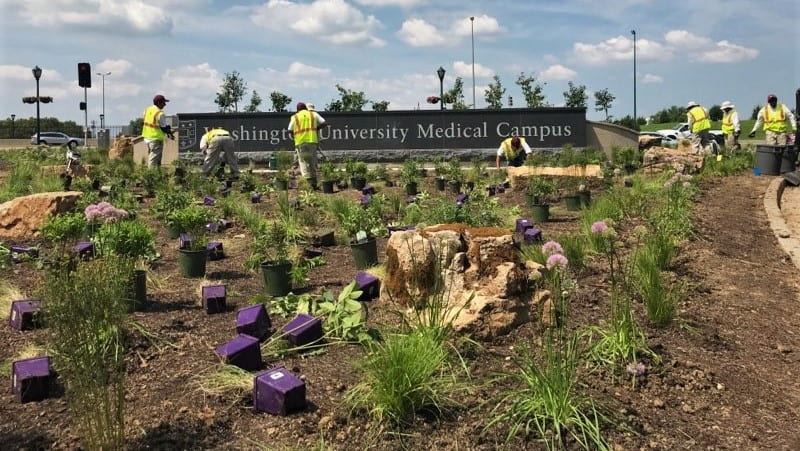
One Comment
Comments are closed.